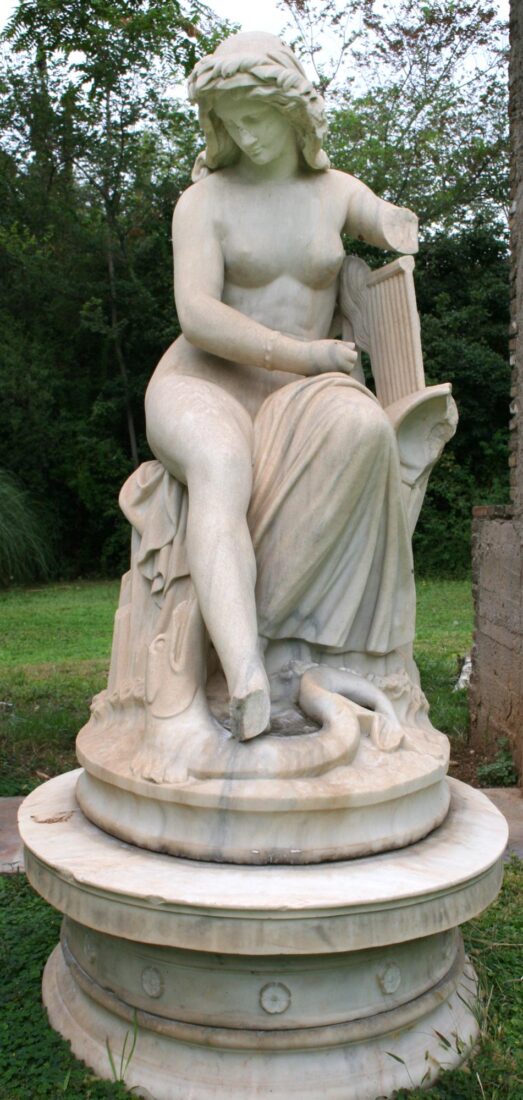We use cookies to make our site work properly, to personalize content and ads, to provide social media features and to analyze our traffic. We also share information about how you use our site with our social media, advertising and analytics partners. Read the Cookies Policy.

Schwanthaler Ludwig (1802 - 1848)
Nymph, [1848]
Marble, 150 x 75 x 108 cm
Nikolaos Ioannis Iliopoulos Bequest
In 1949 Nikolaos G. Iliopoulos presented six marble sculptures to the National Gallery; he had inherited them from his uncle Nikolaos I. Iliopoulos and they had been placed in the garden of the former Thon villa, which was destroyed in December 1944. These sculptures are signed works – four by Georgios Vroutos and one by Georgios Fytalis. The only one that does not bear a signature is “Nymph”, but it was also thought to be a work by Georgios Vroutos and was recorded in the archives of the National Gallery under the title “Water-Nymph”, while in the report by the experts on the evidence obtained from the destroyed villa, it is referred to under the title “Fryni”. But the original attribution to Georgios Vroutos does not stand.
In 1841 the neoclassicist sculptor Ludwig Schwanthaler was commissioned to make a Nymph to be placed in a like-named room in the Anif Palace near Salzburg. Schwanthaler finished the work in marble in 1848. In 1852, with a few insignificant changes in the model, it was cast in bronze for the Royal Garden of Munich, while in 1855 the original or perhaps a copy was presented at the International Exhibition of Paris. In 1906 the original work was transferred from the Nymphs hall to the arcade of the palace where it fit in with the romantic exterior environment.
The “Nymph”, an idealized female figure with long wavy hair decorated with a wreath, is seated on a rock by the edge of the water holding her lyre with a melancholic and somewhat otherworldly expression, while a fish plays at her feet. The pose of the figure expresses thus the romantic spirit of the times in regard to the harmonious coexistence of the human being and nature, and brings to realization similar personal perceptions of the sculptor himself.
The “Nymph”, which came to the National Gallery in 1949, reproduces with almost perfect fidelity the original composition by Schwanthaler and leads to the conclusion that it is yet another copy of the work by Schwanthaler.

